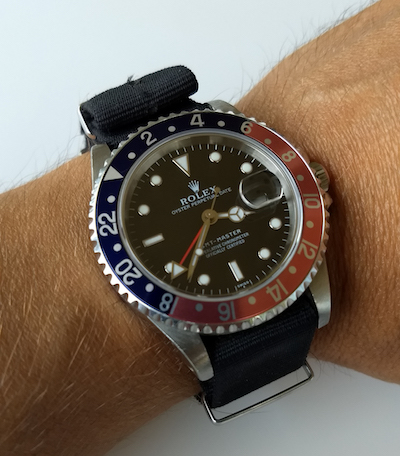This post Financial Insurance You Can Wear on Your Wrist appeared first on Daily Reckoning.
As a kid, my parents would occasionally drag me to Bartikowsky’s, the fancy jewelry store downtown.
While they were picking up a repair or buying some small gold necklace, I would spend most of my time staring into one particular case that contained various Rolex watches.
Blue dials. Gold bracelets. Pictures of scuba divers and racecar drivers. I didn’t really know much but I could tell the watches were a big deal. Maybe it was because the security guard was watching me from the front door.
Today, I wear a Rolex of my own and the company’s watches are hotter than they’ve ever been …
Just last week, the Phillips auction house sold off Paul Newman’s personal 6239-caliber, exotic-dial Rolex Daytona watch for a record-smashing $17.8 million.
Newman’s wife originally bought the watch for him at Tiffany’s back in 1968 … right when he was getting into driving race cars.This is why the caseback bears the inscription, “Drive Carefully Me.”
At that time, the relatively unpopular Rolex model — a chronograph with bold numbering designed for timing motorsports events — retailed for less than $400.
In today’s dollars, that would be a bit more than $2,000.
There’s the first lesson anyone can learn from a Rolex: Inflation happens.
Of course, in the world of Rolex, inflation REALLY happens.
When Paul Newman stopped wearing his Daytona in 1984, the equivalent model already sported a suggested list price of $1,125.
And right now, the current stainless steel Daytona model has a suggested retail price of more than $12,000.
There’s a second lesson: Certain assets steadily appreciate far faster than inflation.
This might seem incredible at first.
As a category, stainless steel Rolex sport watch prices have risen more than six times faster than inflation over the past 50 years.
Again, I’m not even talking about ones that contain precious metals like gold or platinum!
You can chalk most of that pricing power up to a very well-managed, universally-recognized brand name.
It certainly isn’t about rarity. While Rolex is privately held and carefully guards its numbers, most estimates peg annual production at roughly one million watches a year.
The reality is that there is just always enough demand for Rolex watches to keep prices rising far ahead of broad inflation measures.
I’ve seen it since I got my own back in 1999 — a stainless steel GMT Master model with the famous red and blue “Pepsi” bezel.
The watch was about $2,500 new.
Today, my same actual timepiece — with almost 20 years of wear and tear — would easily sell for $7,000 to a collector.
So I could net a very handsome profit after two decades of nearly constant use.
Indeed, vintage watch aficionados actually assign higher values to watches that show scratches, faded bezels, and other marks of authentic wear than they do to cases that have been repolished!
It’s also worth noting that my profit would be far higher than if I’d invested the same amount in the S&P 500 back when I got …read more
Source:: Daily Reckoning feed
The post Financial Insurance You Can Wear on Your Wrist appeared first on Junior Mining Analyst.

